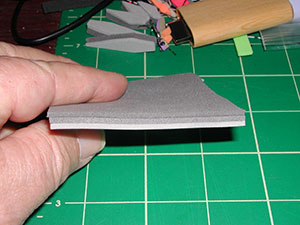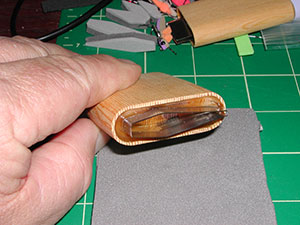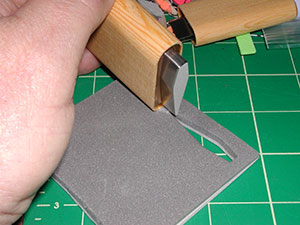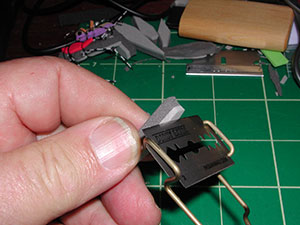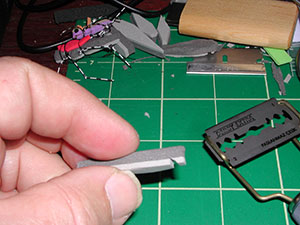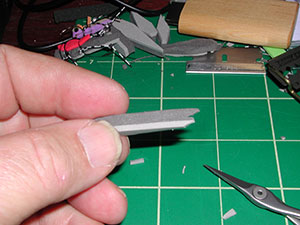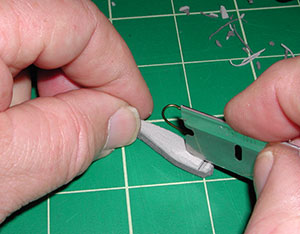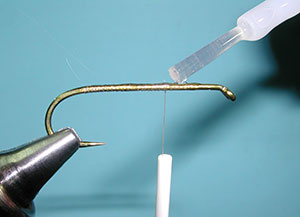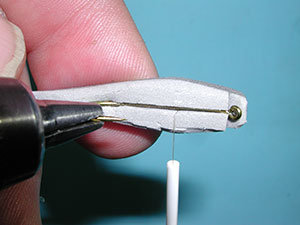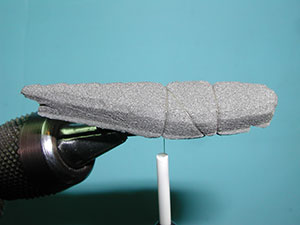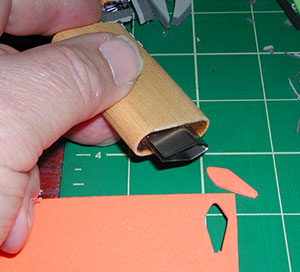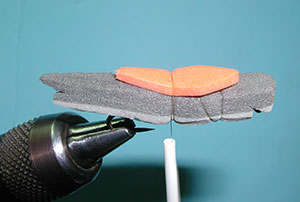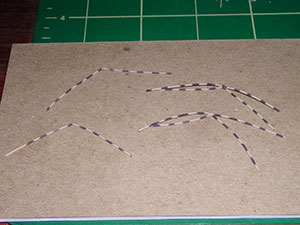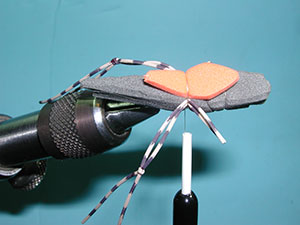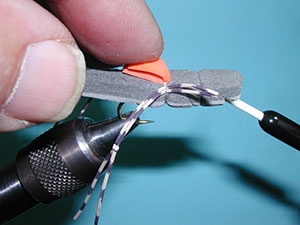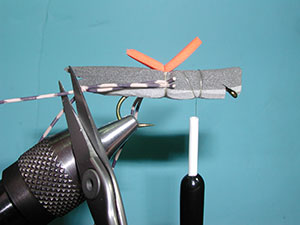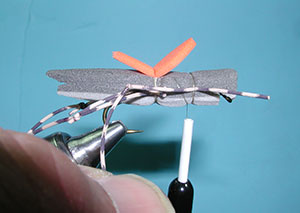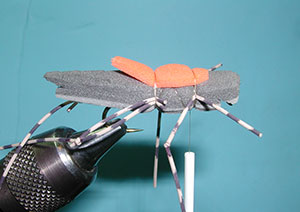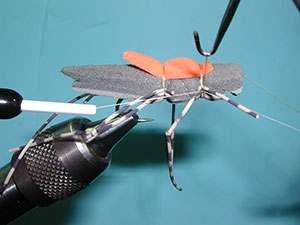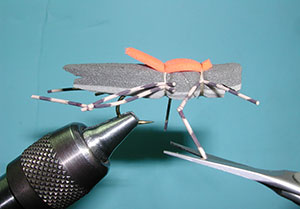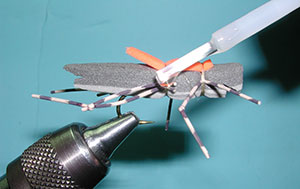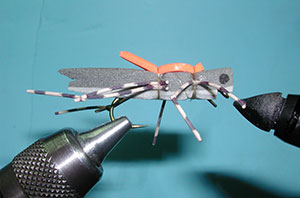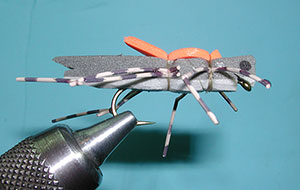Morrish Hopper – reliable most effective hopper ever
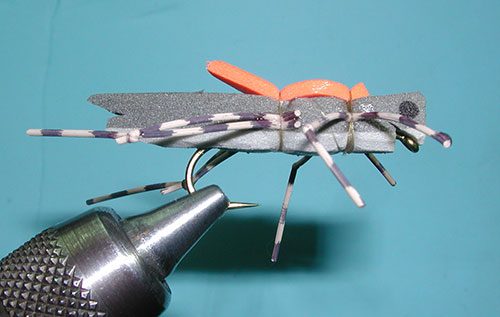
Gray Morrish Hopper
Tying Instructions
| Materials
to Order Material, click the link |
|
|---|---|
| Hook | TMC 5262, sizes 6-12 |
| Thread | Uni-Thread 8/0, Tan |
| Body | 3 layers, 2mm Foam, Dark Gray and Light Gray |
| Legs | Medium Barred Rubberlegs, White |
| Post | 2mm Orange Foam |

Morrish Hopper
The Morrish Hopper has the reputation of being one of the most effective foam hopper patterns ever designed. It wasn’t easy to tie due to all the proportions and trimming of the foam.
Foam Cutters Available
However, all of those consternations went out the window when River Road Creations marketed the Morrish Hopper cutter. Now, it is easy to get the exact proportions for many different sizes with both the body and the indicator.
Perfect Profile
This pattern design has the right profile with a trimmed two tone foam body and rubber legs providing plenty of subtle activity to catch the attention of many trout. The weight and density of this pattern mimics real hoppers, so when you cast one out along a bank, the impact of the hopper on the water is very similar to the real thing.
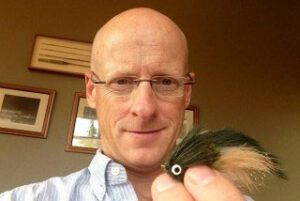
Ken Morrish
Ken Morrish
The Hopper pattern comes from the creativity of Ken Morrish, who also designed the Hotwire Caddis, Morrish May, the Anato May and the Morrish Mouse. Ken grew up in Northern California with a long generation of fly fishers within his family and started to tie flies in his preteens. Heavily influenced by Andre Puyans, Ken puts a lot of thought and care into the details of the pattern using a suggestive quality to his flies. Currently, Ken owns Fly Water Travel out of Ashland, Oregon and is a signature tyer for Umpqua Feather Merchants.
Variations
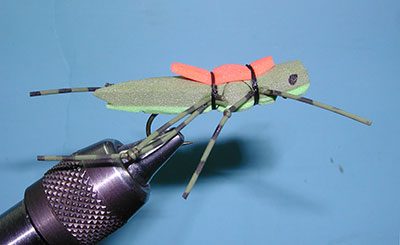
Olive/Chartreuse
| Hook | TMC 5262, sizes 8-12 |
| Thread | Uni-Thread 8/0, Black |
| Body | 3 layers, 2mm Foam, Olive and Chartreuse |
| Legs | Medium Barred Rubberlegs, Olive |
| Post | 2mm Orange Foam |
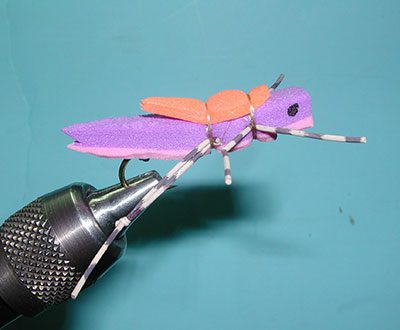
Purple/Pink
| Hook | TMC 5262, sizes 8-12 |
| Thread | Uni-Thread 8/0, Tan |
| Body | 3 layers, 2mm Foam, Purple and Pink |
| Legs | Medium Barred Rubberlegs,Tan |
| Post | 2mm Orange Foam |
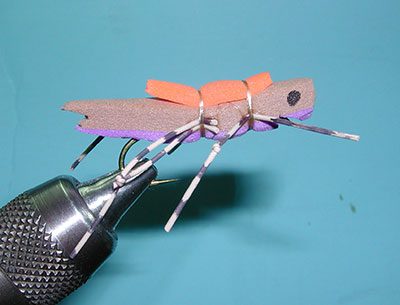
Cocoa/Purple
| Hook | TMC 5262, sizes 8-12 |
| Thread | Uni-Thread 8/0, Tan |
| Body | 3 layers, 2mm Foam, Cocoa and Purple |
| Legs | Medium Barred Rubberlegs,Tan |
| Post | 2mm Orange Foam |
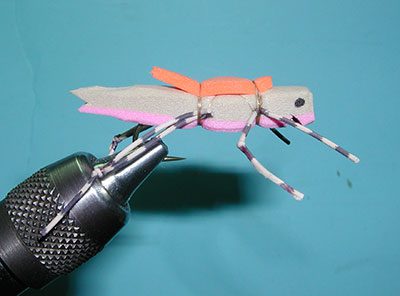
Tan/Pink
| Hook | TMC 5262, sizes 8-12 |
| Thread | Uni-Thread 8/0, Tan |
| Body | 3 layers, 2mm Foam, Tan and Pink |
| Legs | Medium Barred Rubberlegs,Gray |
| Post | 2mm Orange Foam |
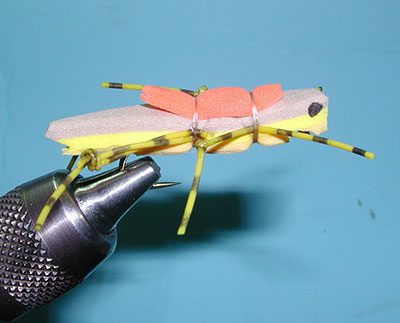
Tan/Yellow/Gold
| Hook | TMC 5262, sizes 8-12 |
| Thread | Uni-Thread 8/0, Tan |
| Body | 3 layers, 2mm Foam, Tan,Yellow,Gold |
| Legs | Medium Barred Rubberlegs,Yellow |
| Post | 2mm Orange Foam |

